 Lately, I have been experimenting with a cyclic eating program that recognizes two of the very different needs our body has. The human body operates in cycles, like the waves of a roller coaster. Most of us have heard of our daily cycle, the circadian rhythm. And everyone is aware of the monthly cycles young and middle-aged women have. (Men have them also.) A cycle that most folks are not aware of is the rhythmic cycle of building and breaking down in the body. This is about protein cycling and recycling on a cellular and molecular level.
Lately, I have been experimenting with a cyclic eating program that recognizes two of the very different needs our body has. The human body operates in cycles, like the waves of a roller coaster. Most of us have heard of our daily cycle, the circadian rhythm. And everyone is aware of the monthly cycles young and middle-aged women have. (Men have them also.) A cycle that most folks are not aware of is the rhythmic cycle of building and breaking down in the body. This is about protein cycling and recycling on a cellular and molecular level.
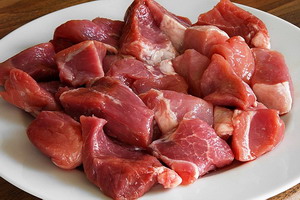 Our bodies are made of protein. Even your bones are 70% protein, not minerals. Every tissue in your body is made from protein. Often these proteins are combined with fats, like in the cell walls of every cell that makes us up. That is us — protein, fat, and water. There are tiny amounts of minerals, sugars, and other interesting chemicals, but not very much. This is different from plants, which are mostly made from sugar. Plants combine sugars to form carbohydrates and woody fibers. There are tiny amounts of protein in plants, but not very much usually. Plants are sugar and water, like a soft drink, but stiffer. The magic is all in how these simple components are put together in many complex ways.
Our bodies are made of protein. Even your bones are 70% protein, not minerals. Every tissue in your body is made from protein. Often these proteins are combined with fats, like in the cell walls of every cell that makes us up. That is us — protein, fat, and water. There are tiny amounts of minerals, sugars, and other interesting chemicals, but not very much. This is different from plants, which are mostly made from sugar. Plants combine sugars to form carbohydrates and woody fibers. There are tiny amounts of protein in plants, but not very much usually. Plants are sugar and water, like a soft drink, but stiffer. The magic is all in how these simple components are put together in many complex ways.
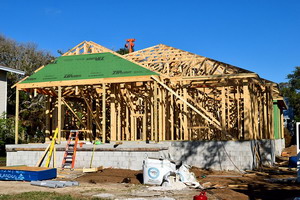 Unlike rocks, living things are constantly in motion. You may not see that motion, like trying to watch your front lawn grow, but come back a couple of weeks later and that lawn is very different. Everything living moves, parts wear out and have to be replaced. This is happening constantly on a microscopic scale. Our bodies have to replace billions of cells every day just to keep functioning. Replacing a cell is like replacing a house in a neighborhood. It takes a lot of material and work to accomplish this. The primary material that is needed is protein. Sometimes you need a little fat and some specialty building materials like vitamins and minerals. Notice, there is zero need for sugars or carbohydrates either to build with or for energy. It makes one wonder why so many people eat so much plant material since they don’t need it for energy, building materials, or anything else.
Unlike rocks, living things are constantly in motion. You may not see that motion, like trying to watch your front lawn grow, but come back a couple of weeks later and that lawn is very different. Everything living moves, parts wear out and have to be replaced. This is happening constantly on a microscopic scale. Our bodies have to replace billions of cells every day just to keep functioning. Replacing a cell is like replacing a house in a neighborhood. It takes a lot of material and work to accomplish this. The primary material that is needed is protein. Sometimes you need a little fat and some specialty building materials like vitamins and minerals. Notice, there is zero need for sugars or carbohydrates either to build with or for energy. It makes one wonder why so many people eat so much plant material since they don’t need it for energy, building materials, or anything else.
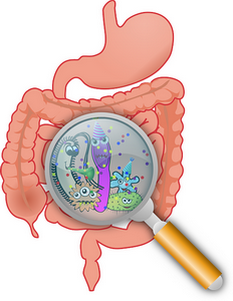 There is actually a partial answer to the question of why eat plant materials. We may not need the plants, but many of the passengers on our bus do like them. I am talking about our microbiome — all those tiny critters like bacteria, viruses, and fungi that live in our gut. Many of them eat plant fibers and then excrete various vitamins and chemicals that are necessary for our health. The critters that like the simpler sugars and carbs are usually the ones that are not so healthy for us. Because of this, we are better off not feeding those guys with all the simple carbs and sugars from grains, tubers, and processed sugars. However, most of the greens and complex carb plant foods can be used successfully for keeping us healthy.
There is actually a partial answer to the question of why eat plant materials. We may not need the plants, but many of the passengers on our bus do like them. I am talking about our microbiome — all those tiny critters like bacteria, viruses, and fungi that live in our gut. Many of them eat plant fibers and then excrete various vitamins and chemicals that are necessary for our health. The critters that like the simpler sugars and carbs are usually the ones that are not so healthy for us. Because of this, we are better off not feeding those guys with all the simple carbs and sugars from grains, tubers, and processed sugars. However, most of the greens and complex carb plant foods can be used successfully for keeping us healthy.
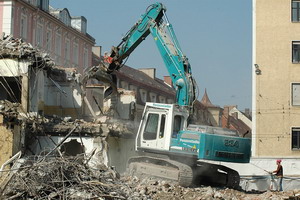 So, what is this building and breaking down cycle I was talking about in the beginning? Considering that a healthy body needs to replace billions of cells daily, are we not always in building mode? Yes, generally we are. This creates a problem. If you have ever watched a building being replaced, you will notice that the first step is to tear down the old building and clean up the debris. Unfortunately, when a cell stops functioning well and sends out the message that a new cell is needed to replace its functioning, the old worn-out cell does not just go away. Often times it just hangs around as an old dysfunctional cell. These are called senescent cells, and they cause all sorts of health problems. It is kind of like Sacramento many decades ago. The suburbs kept growing and growing while the downtown region just got old and nasty. It took a lot of time and effort to revitalize the older parts of Sacramento. Whole blocks had to be razed and new buildings constructed.
So, what is this building and breaking down cycle I was talking about in the beginning? Considering that a healthy body needs to replace billions of cells daily, are we not always in building mode? Yes, generally we are. This creates a problem. If you have ever watched a building being replaced, you will notice that the first step is to tear down the old building and clean up the debris. Unfortunately, when a cell stops functioning well and sends out the message that a new cell is needed to replace its functioning, the old worn-out cell does not just go away. Often times it just hangs around as an old dysfunctional cell. These are called senescent cells, and they cause all sorts of health problems. It is kind of like Sacramento many decades ago. The suburbs kept growing and growing while the downtown region just got old and nasty. It took a lot of time and effort to revitalize the older parts of Sacramento. Whole blocks had to be razed and new buildings constructed.
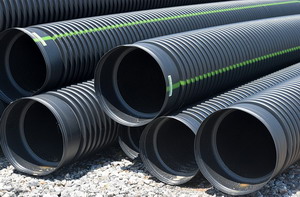 Our bodies are much like the city example. There has to be a time of tearing down before revitalization can take place. If you think of protein as the bricks, mortar, concrete, and steel you build with, you can see that you would not want to be transporting all of these to a site that needs to be razed. Tearing down and cleaning up is a very different need compared to building. It needs a different environment to take place. It needs a lack of protein to drive the process. Why is that?
Our bodies are much like the city example. There has to be a time of tearing down before revitalization can take place. If you think of protein as the bricks, mortar, concrete, and steel you build with, you can see that you would not want to be transporting all of these to a site that needs to be razed. Tearing down and cleaning up is a very different need compared to building. It needs a different environment to take place. It needs a lack of protein to drive the process. Why is that?
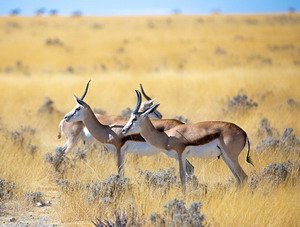 Historically throughout human history, protein was scarce. This is because protein moves around in the form of animals. Plants are pretty easy to hunt down and carry home for dinner. Animals tend to run away. Even when we became herders, animals for food were highly valued. It takes a lot of work to care for a flock. Simply put, throughout most of human history we would frequently have times of food lack, particularly protein lack. In order to survive, since we need to replace billions of cells every day, our bodies became very efficient at recycling the old broken-down cells and using the protein-building materials over and over. This is called autophagy. We can’t really store excess protein, but when we have an abundance of protein in our diet, we don’t waste valuable energy replacing and recycling old cells. When we are in protein lack that mechanism turns on and the recyclers come out in force. This is the breaking down cycle.
Historically throughout human history, protein was scarce. This is because protein moves around in the form of animals. Plants are pretty easy to hunt down and carry home for dinner. Animals tend to run away. Even when we became herders, animals for food were highly valued. It takes a lot of work to care for a flock. Simply put, throughout most of human history we would frequently have times of food lack, particularly protein lack. In order to survive, since we need to replace billions of cells every day, our bodies became very efficient at recycling the old broken-down cells and using the protein-building materials over and over. This is called autophagy. We can’t really store excess protein, but when we have an abundance of protein in our diet, we don’t waste valuable energy replacing and recycling old cells. When we are in protein lack that mechanism turns on and the recyclers come out in force. This is the breaking down cycle.
 How is this relevant to our health today? In the USA we have been on a protein binge since WW2. This has made us taller and stronger. China is going through a similar transformation right now. As they gain more affluence, they are eating more meat and high-protein foods. Consequently, they are getting taller and stronger. But there is a downside to this story. Constantly pumping proteins into our systems keeps the breakdown cycle turned off. We build up more and more senescent cells which slowly poisons our bodies. As hunters, we acquire game to eat, but that only lasts a few days. We had no refrigeration back then, so we ate what we had until it was gone and then went back out hunting again. It might be days before we got lucky and scored another animal for the next few dinners. So, I am thinking that way back then the protein/no protein cycle was probably about a week long. So, I have started building this back into my life.
How is this relevant to our health today? In the USA we have been on a protein binge since WW2. This has made us taller and stronger. China is going through a similar transformation right now. As they gain more affluence, they are eating more meat and high-protein foods. Consequently, they are getting taller and stronger. But there is a downside to this story. Constantly pumping proteins into our systems keeps the breakdown cycle turned off. We build up more and more senescent cells which slowly poisons our bodies. As hunters, we acquire game to eat, but that only lasts a few days. We had no refrigeration back then, so we ate what we had until it was gone and then went back out hunting again. It might be days before we got lucky and scored another animal for the next few dinners. So, I am thinking that way back then the protein/no protein cycle was probably about a week long. So, I have started building this back into my life.
 Fifty years ago I had the health/spiritual practice of fasting from Thursday night to Saturday morning. I did this for 20 years and it worked quite well for me. I didn’t know any of the stuff I know now about what was happening on a cellular level, but my belief was that I was cleansing my body in some good way. I am rebuilding my old health habit pattern but with a boost. My body needs a lot more help these days, so I am extending the fasting time by starting Wednesday afternoon instead of Thursday afternoon. Plus, now that I understand the needs of the good guy bacteria in my gut, I want to keep feeding them even though I am putting myself into a protein deficit for a couple of days.
Fifty years ago I had the health/spiritual practice of fasting from Thursday night to Saturday morning. I did this for 20 years and it worked quite well for me. I didn’t know any of the stuff I know now about what was happening on a cellular level, but my belief was that I was cleansing my body in some good way. I am rebuilding my old health habit pattern but with a boost. My body needs a lot more help these days, so I am extending the fasting time by starting Wednesday afternoon instead of Thursday afternoon. Plus, now that I understand the needs of the good guy bacteria in my gut, I want to keep feeding them even though I am putting myself into a protein deficit for a couple of days.
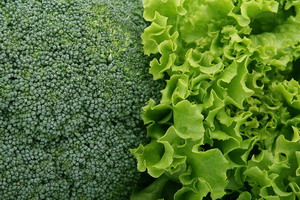 What does that look like? It looks like eating only salads and steamed low-carb veggies on Thursdays and Fridays. I also use a vitamin shake each day, actually every day to pump up my levels of A, D, E, and K2. My shake also has glutamine, glycine, and taurine to help heal my gut and support liver detoxification pathways. This should give my body 64 to 72 hours of breakdown and recycling time each week. Ellen has decided to follow my example with this. I have been doing this for the past three weeks and so far it is working well. This protocol also allows vinegar, herbs, and tiny amounts of oil to help those salads get down the hatch.
What does that look like? It looks like eating only salads and steamed low-carb veggies on Thursdays and Fridays. I also use a vitamin shake each day, actually every day to pump up my levels of A, D, E, and K2. My shake also has glutamine, glycine, and taurine to help heal my gut and support liver detoxification pathways. This should give my body 64 to 72 hours of breakdown and recycling time each week. Ellen has decided to follow my example with this. I have been doing this for the past three weeks and so far it is working well. This protocol also allows vinegar, herbs, and tiny amounts of oil to help those salads get down the hatch.
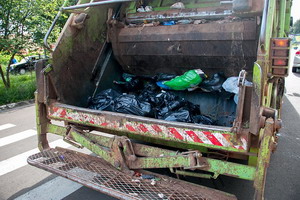 Part of the driving force for this move is watching my aunt and now my mother struggling with memory issues. Alzheimer’s is driven by a failure of the cleaning out mechanisms in the brain to clear out the old accumulated garbage. Our modern lifestyle has created too much food security and comfort. We are not forced to contend with food scarcity anymore. That means we are never naturally put into the breakdown and clean out part of the life cycle the body is designed to have. I will let you know how this experiment goes.
Part of the driving force for this move is watching my aunt and now my mother struggling with memory issues. Alzheimer’s is driven by a failure of the cleaning out mechanisms in the brain to clear out the old accumulated garbage. Our modern lifestyle has created too much food security and comfort. We are not forced to contend with food scarcity anymore. That means we are never naturally put into the breakdown and clean out part of the life cycle the body is designed to have. I will let you know how this experiment goes.
Take care,
David
